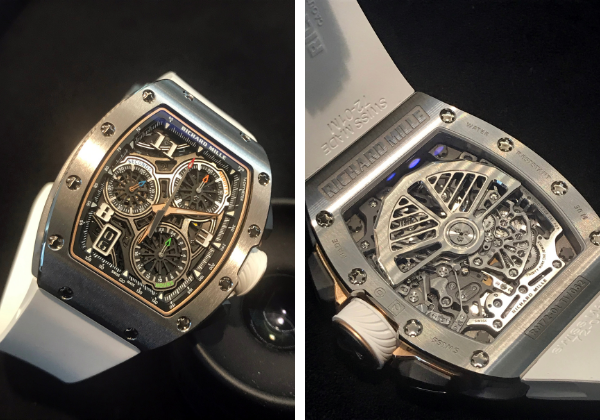It's been a long time since we've seen something (really) new in the field of chronographs. There was the mini-revolution at Agenhor a few years ago, the chronograph with co-axial central hands, which can be seen in Fabergé, Singer and more recently H. Moser & Cie. TAG Heuer, with its Mikro series of chronographs, went to stratospheric frequencies. And don’t forget the Triple Split by Lange & Söhne or the MaxiChrono by De Bethune.

Richard Mille, in his time, attacked the chronograph from another angle: weight. His RM 50-03 weighed 38 grams. The timepiece was unveiled in 2017. But what the watchmaker was keeping secret was that, in the process, he was no longer looking at the chronograph’s exterior, but at its complete development. The result has just been unveiled: welcome to the RM 72-01 automatic flyback chronograph.
Amicable Divorce
The most obvious technical problems are often the least perceived. The chronograph is no exception. Very simply, in a traditional chronograph, the energy from the chronograph is drawn from the gear train immediately before the escapement. It's a reliable, direct-drive system that has proven its worth. But it's also a bad idea because in terms of efficient energy allocation, the seconds wheel should not be used as a source of energy for any complication whatsoever, chronograph included! Hence Richard Mille's idea: totally decouple the chrono part from the time part.

All together. But separately.
At the heart of the RM 72-01, the chronograph is no longer powered by the seconds wheel: it draws its energy directly from the barrel. What's more, the seconds wheel is decoupled from the minutes wheel, which in turn is decoupled from the hours wheel, thanks to a new clutch developed ad hoc by Richard Mille. Each element is therefore independent in terms of energy and its peers.
When the chronograph is started, a veritable ballet begins to move: column wheel, clutch levers and oscillating pinions, which finally mesh with their respective mobile (hours, minutes, seconds). Like three people in the same room, totally independent and who, at the top start (starting the chrono), join hands and move forward in single file.

The why of the how
There are several motivations for this new development. Firstly, it refutes the idea of a chronograph powered by the seconds wheel. The process was so tried and tested that little attention was paid to it anymore. But it is still a technical nonsense: in the car, when you want energy, you go to the battery. Not the gearbox.
Drawing its power directly from the barrel, the chronograph is also more powerful, less subject to variations in the power of the seconds wheel, but also to the shocks and inconveniences that could affect it. What's more, the dissociation of the chronograph function from the time function hardly affects the movement's progress when the chronograph is started. Translation: the power reserve of the RM 72-01 (50 hours in this case) is therefore always the same, whether the chronograph is on or off.
Finally, this mechanism is less cumbersome than most of those currently in use. The fact remains that the part, with 425 components, is of a rare complexity. In watchmaking, complexity often rhymes with fragility. But in terms of robustness, Richard Mille doesn't have much more to prove...






